Workshop Speakers
Integrated Biosensors
Abstract
Over the past few years, we have witnessed a significant increase in research on biological systems by engineers for environmental and biomedical diagnostics. Despite efforts to develop chips for biological assay detection, there continues to be a need to improve implementations of micro-scale detection and processing systems for further convenience, scaling and portability. These devices will lead to a significant cost-savings, throughput increases, and enable heretofore infeasible biological assays making “in the field” biological testing a reality. Thus infectious diseases can be detected rapidly and accurately onsite potentially averting the spread of illnesses or tainted foodstuffs. We will present the design and implementation of monolithic and hybrid sensors using integrated circuits, particularly in CMOS.
We will begin by providing the definitions and performance metrics of sensors and a brief overview of various noise processes. Subsequently, we will discuss the advantages and shortcomings of sensors built in silicon-based fabrication processes and examine, in detail, their integrated circuit topologies. Next, we will provide a comprehensive study of the design and analysis of CMOS integrated image sensors, integrated biosensors, and electronic backbone of MEMS hybrid sensors. Topics include: silicon photodetectors; CCD and CMOS sensor architectures and circuits; Affinity-based detection and biochemical transduction; optical, electrochemical, and mechanical transducer design; integrated microarrays, biochips, and sensor SoCs.
The Memristor: Elusive Device
Abstract
The memristor (M) is considered to be the fourth two-terminal passive element in electronics, alongside the resistor (R), the capacitor (C), and the inductor (L). Its existence was postulated in 1971 but its first implementation was reported in 2008. Where was it hiding all that time and what can we do with it? Come and learn how the memristor completes the roster of electronic devices much like a missing particle that physicists seek to complete their tableaus.
Biography

Khaled N Salama,
KAUST
Dr. Khaled N Salama received his bachelor’s degree with honors from the Electronics and Communications Department at Cairo University in Egypt in 1997, and his master’s and doctorate degrees from the Electrical Engineering Department at Stanford University in the United States, in 2000 and 2005 respectively. He was an asistant professor at RPI between 2005 and 2009. He joined kaust in January 2009 and was the founding program chair til August 2011. His work on CMOS sensors for molecular detection has been funded by the National Institutes of Health (NIH) and the Defense Advanced Research Projects Agency (DARPA), awarded the Stanford-Berkeley Innovators Challenge Award in biological sciences and was acquired by Lumina Inc. He is the author of 90 papers and 8 patents on low-power mixed-signal circuits for intelligent fully integrated sensors and non linear electronics specially memristor devices. He is a senior member of IEEE.
The Memristor Circuits and Applications
Abstract
The ability of the human brain to provide different logic functions using physically similar cell structures is at the heart of its plasticity and ability to generalize. The principle of firing of neurons and connectivity of neuron networks gives rise to its generalized logical ability required to perform different cognitive tasks such as face recognition, object detection, identification and categorisation, rapidly, effortlessly and in real-time. These are computationally difficult tasks when performed in machine but the brain needs very low power and no pre-defined software. Inspired by the principle of firing of neurons in the primate brain, and the ability of similar neuronal structures to perform different cognitive tasks, this thesis explores programmable (mem) resistance-based threshold logic memory networks that are shown to perform basic logic functions to highly involved cognitive tasks such as face recognition and fast moving object detection, and computing architecture in a parallel, scalable hardware architecture.
Biography

Alex Pappachen James,
Nazarbayev University
Dr. Alex James received his doctorate degrees from the Electrical Engineering Department at Griffith University in the Australia, completing in less than 2 years’ time-frame. Since 2009, he has been working as a faculty member at various universities in Australia and India, and presently in Nazarbayev University, Department of Electrical Engineering. He work on pattern recognition, VLSI and circuits; and work closely with industry and academic partners to develop cutting edge solutions to solve brain inspired computing and circuits problems. He is active researcher and engages as reviewer, editor for several of the top ranked journals in the field. He is a senior member of IEEE.
Application of Nonlinear Acoustics for Detection of Biological Anomalies
Abstract
The primary application of this technology has been used with ultrasound in medicine and ultrasonic ranging (SONAR). Recent developments in nonlinear acoustics have shown that two-tone measurements can be used to extract more information about the size, shape and density of the objects under inspection. A central issue in the successful application of acoustic wave methods is the understanding of the influence of material density on the propagation of nonlinear acoustic waves. In order to determine the location or image in biological media it is vital to understand the attenuation of acoustic waves. This includes the theory of generation of intermodulation products according to extended-Burgers nonlinear wave equation with prescribed boundary conditions.
Biography
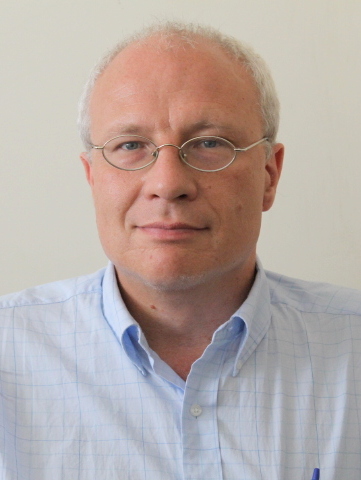
Grant Ellis,
Nazarbayev University
Grant A. Ellis earned his Ph.D. in Electrical Engineering at the University of Washington (Seattle, USA), in 1996.
His B.Sc. in Electrical Engineering (1983) and M.Sc. in Electrical Engineering (1986) were earned at Washington State University (Pullman).
He has 19 years of industrial engineering experience and has held positions at the Boeing Company in Seattle, HRL, and Agilent / Avago Technologies in Penang. His duties included monolithic microwave integrated circuit (MMIC) design for phased-array communication antennas and wireless basestation applications and antenna design including propagation analysis for implementation on aircraft including rotocraft. His MMIC design work includes state-of-the-art high linearity amplifier design using GaAs, InP, and GaN device technologies covering frequencies from VHF to millimeter-wave range.
He has 7 years of academic experience as a faculty member at the Universiti Teknologi Petronas (UTP) in Tronoh, Malaysia and the National University of Singapore (NUS). At UTP, he liaised with local industry in MMIC research projects. He has served as an External Lecturer in Communications Engineering at the RWTH in Aachen, Germany in July of 2006 and 2007. He has also taught a short course in Monolithic Microwave Integrated Circuit Design at the Thai - German Graduate School (TGGS) in Bangkok.
His research interests are Monolithic Microwave Integrated Circuit (MMIC) and RFIC design, millimeter wave MMIC design, Microwave computer aided design techniques, and electromagnetic propagation. Dr Ellis has written over 40 technical papers and publications and holds 5 US patents. He is the founding chairman of the IEEE MTT-S/EDS/SSCS Penang chapter. He has served as a reviewer for several professional journals including the IEEE Transactions on Antennas and Propagation and the Journal of the Applied Computational Electromagnetics Society (ACES). He is a member of the Tau Beta Pi and Eta Kappa Nu National Engineering Honor Societies and the Sigma Xi Scientific Research Society. He is a registered professional engineer in the State of California, and has been a Senior Member of the IEEE since 2004. He is very interested in academic and industrial lecturing, mentoring, and research collaboration with local, international and multicultural teams.
Translational Biomechanics in Glaucoma
Abstract
Glaucoma is the second leading cause of blindness in the world. Intraocular pressure (IOP) is a primary indicator of glaucoma. The IOP measured in tonometry is generally compared to a threshold IOP level (21 mmHg) as a reference for clinicians to determine if the subject is at risk. Precision measurement of the IOP depends on accurate measurement of corneal geometries and corneal biomechanical properties. Both the measured IOP and threshold IOP, however, ignore the individual variations of the ocular tissue biomechanical properties in human eyes. The inclusion of individual ocular biomechanical properties is needed to improve the accuracy of measured IOP and clinical relevance of threshold IOP. This review will focus on the fundamental theories and practices of ocular biomechanics in glaucoma.
Biography
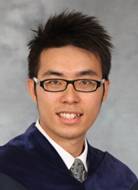
Match Wai Lun Ko,
Nazarbayev University
Dr. Match Wai Lun Ko received his Ph.D. and B.Eng. in Mechanical Engineering from the Hong Kong University of Science and Technology. Dr. Ko’s overarching research theme is biomaterials, both fundamentals and applications. His research focused on the biomechanics and biomaterial mechanical properties characterization using experimental testing and computational simulation, design and fabrication of related medical device to assist the clinicians to preform disease diagnosis and decision making regarding screening of disease and treatment management. His ongoing research topics include biomaterials and hyper-elastic materials characterization, drug delivery and development of medical and diagnostic devices.
Optical Fiber Sensors for Biomedical Applications
Abstract
Optical fiber sensors (OFS) are a powerful technology that allows bringing sensors to unmatched active size, accuracy, distribution, and integration. OFS find significant applications in biomedical engineering, whereas the small size and the possibility to detect a plurality of parameters on the same fiber is a key asset. The most significant results achieved so far, in terms of development, consist in the realization of a micro pressure sensor, fully biocompatible, with 1 Pa accuracy, integrated with a temperature sensor. Other technologies including hyperdense temperature sensing, with less than 0.1 mm resolution. The talk will discuss four biomedical key applications, in which OFS can significantly improve the state of the art: (1) thermal ablation of tumors; (2) urodynamic analysis; (3) cardiovascular diagnostic; (4) robotic surgery – presenting the latest results ex-vivo and in-vivo.
Biography
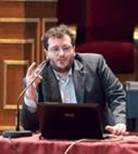
Daniele Tosi,
Nazarbayev University
Dr. Daniele Tosi is an Assistant Professor at Nazarbayev University, Astana, Kazakhstan; previously he held Marie Curie Fellowship at the University of Limerick, Ireland (2012-2014), and engineering positions at Sensornet and Fiberlogix (UK). He received his BEng, dual-MEng (telecommunication engineering), and PhD degrees (electronic engineering) from Politecnico di Torino in 2004, 2006, and 2010, respectively. He is recipient of Marie Curie, Fulbright, Endeavour fellowships and TR35-Italy prize. His research activity includes fiber-optic pressure sensors, fiber Bragg gratings, biomedical engineering.
CFD Modeling Of Blood Seggregation and Cells Damage in Ventricular Assist Devices (VAD’s)
Abstract
Alterations in the blood fluid dynamics caused by components of Ventricular Assist Devices (VADs) are responsible for damage to the membranes of red blood cells (RBCs) that in turn can lead to their rupture (hemolysis) and for platelets activation as the initial stage to thrombus formation, two very important categories of blood damage or lysis. The shear stresses and the exposure time to such stresses are the physical mechanisms associated to the lysis in VADs. Therefore, the reliable quantification of the lysis is a major concern in any new design before it is experimented in humans. Despite today’s powerful computer clusters and super-computers, numerical techniques are far from being able to capture the physical phenomena around the cell damage via Direct Numerical Simulation due to the multi-cellular nature of the blood. Instead, in-vitro experiments and 3D multiphase flow analyses are still the preferred path to help predicting and reducing the lysis in new VADs designs.
This research, in collaboration with the Biomedical Engineering Dept. of Carnegie Mellon University, aims to the prediction of blood lysis, focusing on the development of a computational model capable to elucidate physical aspects of the blood segregation process and afterwards, to predict the hemolysis and platelet activation within typical components in VADs (e.g., stenotic connectors and cannulas). A 3D three-phase computational fluid dynamics model that includes plasma, red blood cells and platelets is proposed, in opposition to popular, but inaccurate, homogeneous models. This approach eliminates a source of error present in a single-continuum representation of the blood flow, which does not distinguish between the trajectories of the RBCs, platelets and plasma. This multiphase feature is important in the evaluation of the recirculation zones generated within irregular geometries. Turbulence modeling, when needed, is computed using an appropriate model, chosen from a previous benchmarking scrutiny. Numerical results on cells segregation, firstly demonstrate a very good agreement with experimental data, revealing a non-uniform distribution of blood cells and platelets due to the migration and re-accommodation of blood cells around the regions of highest inertia and close to the boundaries. On top of the segregation model, the lysis is computed based on the application of Giersepen’s model extended to an Eulerian frame of reference. Comparative results demonstrate the much better prediction obtained by using multi-component models as compared to homogeneous models, since the former calculate the lysis only in regions where blood cells exist (either RBCs for hemolysis or platelets for their activation).
Biography
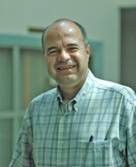
Luis R. Rojas-Solórzano,
Nazarbayev University
Dr Luis Rojas-Solórzano earned his Ph.D. in Mechanical Engineering at Carnegie Mellon University (USA), 1997. His B.Sc. in Mechanical Engineering (1985) and M.Sc. in Hydraulic Engineering (1991) were earned at Simon Bolivar University (Venezuela), where he spent more than 25 years as a faculty and consultant in the Dept. of Energy Conversion and Transport. In Venezuela he served as a Senior Consultant (PI) to the Oil & Gas and to the Hydro-Power Generation industries (Note: by 2014, Venezuela ranks worldwide as the 8th Oil Producer [IEA, 2013], 7th Oil Exporter [IEA, 2013], 1st Proven Crude Oil Reserves, 2nd Natural Gas Reserves in Western Hemisphere, 3rd Largest Hydropower Plant, 1st Largest Re-furbished Francis Turbines and 70% of Hydroelectricity consumption). Dr. Rojas-Solórzano is a senior professional with ample experience in Advanced Fluid Dynamics, CFD and Clean Energy Technologies with previous and current teaching and research invited appointments in, France, Venezuela, Perú, Portugal and Spain. He has also served as invited Research Scientist and Consultant at Carnegie Mellon University (USA), Phillips-Respironics (USA), Dresser-Rand (USA), ESSS (Brazil) and Grupo SAGE (Brazil). Dr. Rojas-Solorzano has strong international scientific liaisons with research teams in France, USA, Portugal, Norway, Perú and Venezuela, focused on biomedical engineering, hydroinformatics, microfluidics, impinging jets, flow assurance and clean energy technologies assessment. He has been the Principal Consultant in more than 12 funded multidisciplinary (industry-related) research projects for the energy, oil, food, transportation and environmental industries, and has authored and co-authored +50 technical papers and +20 industry technical reports in those fields. Dr. Rojas-Solórzano is Associate Editor of the Journal of Applied Fluid Mechanics (JAFM) and reviewer in several international journals, and has advised more than 50 Master/Ph.D. students.
Advances in Medical Ultrasound Imaging
Abstract
The ultrasonography, as a low cost and portable medical imaging modality, is intensively used by clinicians all over the world to diagnose diseases and monitor patient health. After a general introduction of the physical principles of ultrasound imaging and their technical implementation into clinical systems, this lecture will present the latest advances in the field of scientific research. In particular, the emerging ultrasound imaging modalities will be addressed including quantitative-, molecular- and hybrid-imaging. Their clinical applicability will be discussed as well.
Biography
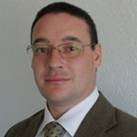
Nicolas Rognin,
Nazarbayev University
Dr. Nicolas Rognin was awarded his PhD in acoustical physics at the biomedical imaging research laboratory CREATIS at Lyon (France). From 1999 to 2002, he lectured in computer science at the University of Lyon (France). In 2002, he joined as a research scientist the pharmaceutical group BRACCO at Geneva (Switzerland). Working on scientific computing for diagnostic applications, he created with his team several medical image processing software products used for perfusion quantification and cancer characterization in clinical practice and pre-clinical research. From 2010 through 2014, in his position of principal scientist at TOSHIBA Medical Research Institute at Seattle (USA), he led numerous academic–industrial partnerships in molecular imaging for early tumor detection and cancer treatment optimization. Since 2015, he is an Associate Professor in the School of Engineering of Nazarbayev University (Astana, Kazakhstan).